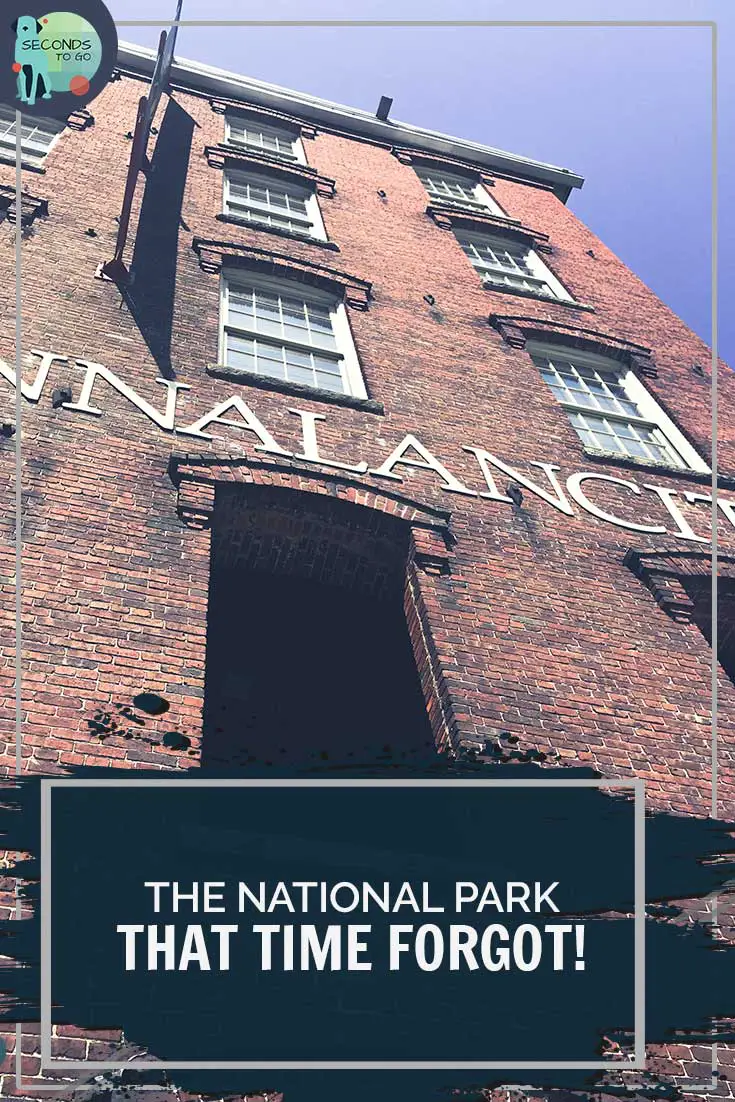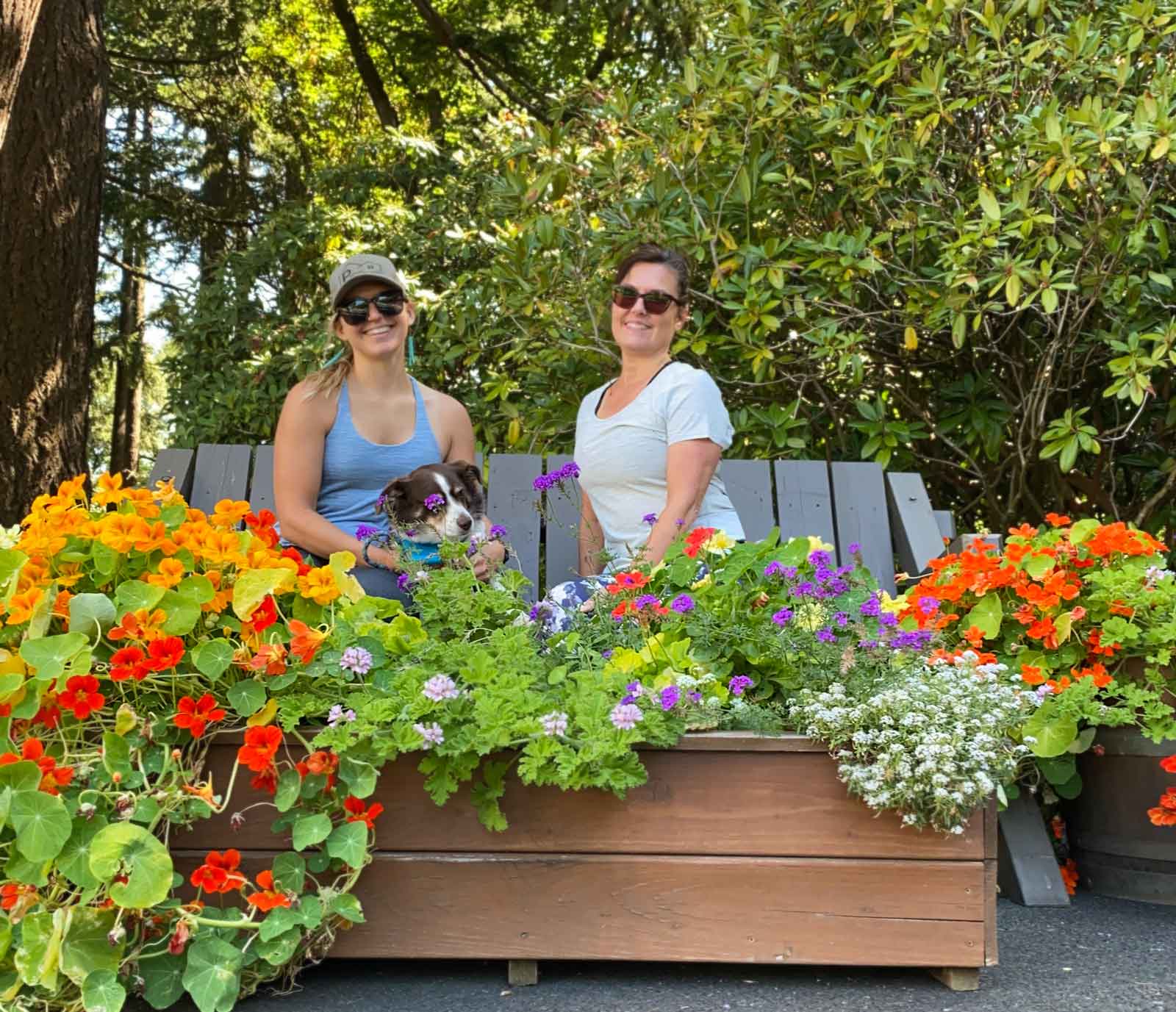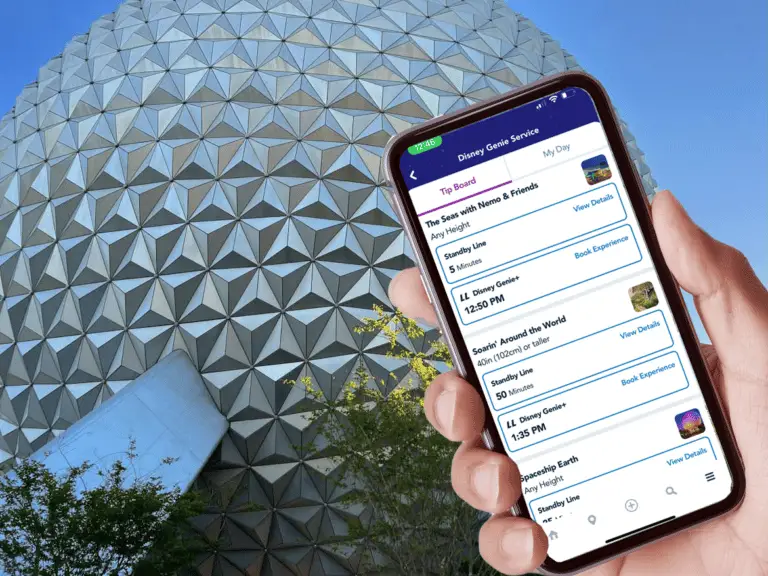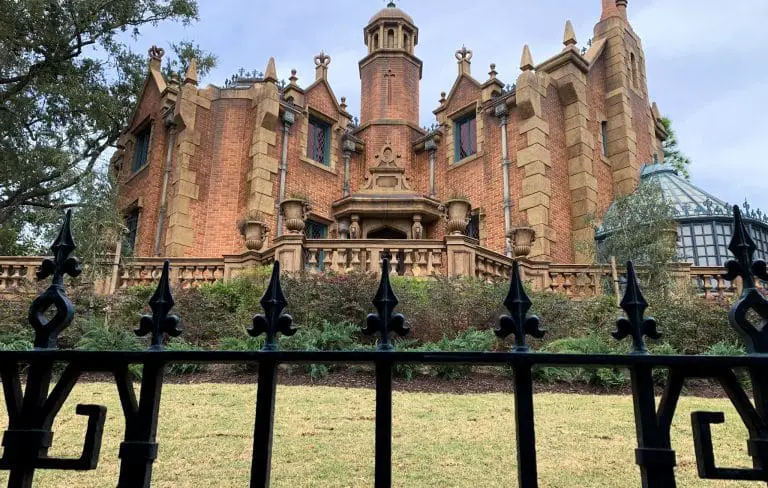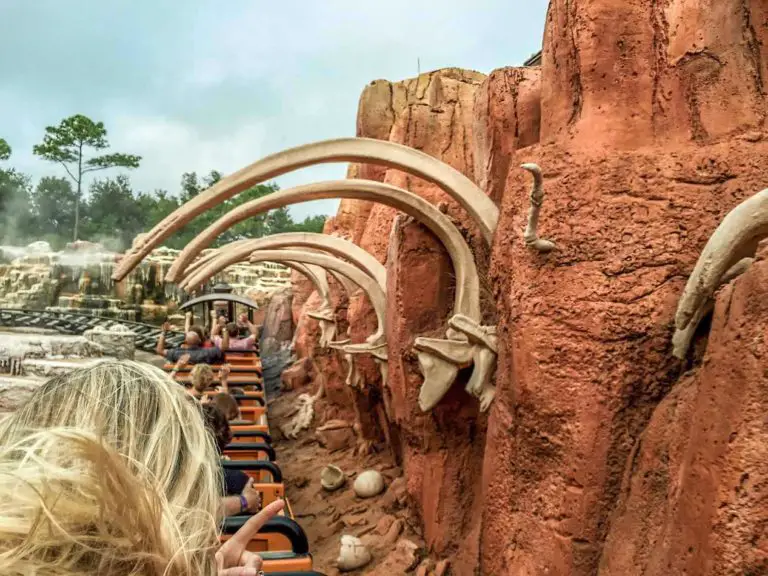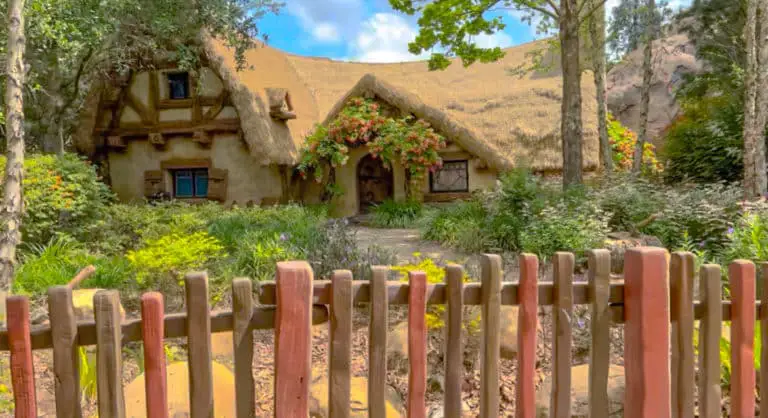A visit to Lowell National Historic Park is a visit back in time to the 19th century during the peak of the Industrial Revolution. Located in the heart of the city of Lowell Massachusetts, Lowell National Historic Park doesn’t provide views of nature and wildlife like other national parks, but rather a deep delve into New England history.
The Visitor’s Center: the First Stop on Our Time-Travelling Tour
The visitors center at Lowell National Historic Park is a great place to begin your travel back in time. Inside, we found friendly staff to answer any and all questions we had. They explained the tours available for visitors and suggested that we begin with the exhibits and movie inside of the visitor’s center.
Lowell was built on the textile trade of the turn of the last century, and these exhibits are designed to introduce travelers to the industrial history of the area. The small exhibits include an overview of how the industrial revolution affected Lowell, as well as exhibits explaining the patent that covered the textile looms, the modern miracle of the time that made mass production of fabric possible. Also inside the visitors center is an informative and concise film explaining the history of Lowell and how the town’s textile revolution began.
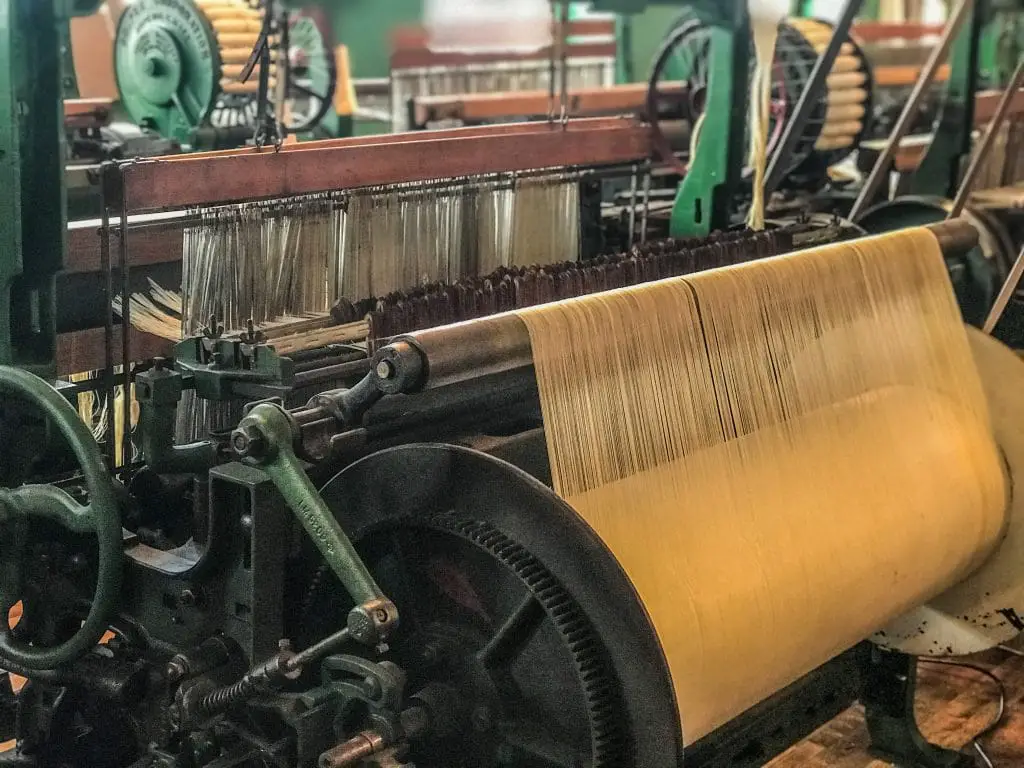
History of Lowell MA
At the time, Great Britain ruled the textile industry, thanks to the invention of the power loom. Tight controls on the industry and the loom itself prevented outsiders from gaining access to the technology, ensuring that Britain remained the superpower of the textile trade.
Enter, Francis Cabot Lowell, who in 1813, designed and constructed the first American designed power loom, after secretly spying on British textile operations and reverse engineering the loom.
With the new power loom available to the industry, wealthy investors began to explore the U.S. for the perfect site to create its own textile empire. Since Lowell’s proximity to the Merrimac River made for easy construction of a canal system necessary to power the mills, it was an ideal city for the industrious plan.
In 1823 the Merrimac Canal was constructed and used as part of the existing Pawtucket Canal which powered early 1800’s cotton mills. Shortly after, textile mills were built along the waterways and by the middle of the 1800’s, Lowell contained almost a dozen textile mills. Lowell became the first manufacturing city in the country.
Women in the Workplace
We then watched as the film delved into the history of the people of Lowell MA. The promise of independence and good wages brought in many young women from farm life to factory life.
In the early years, women were the main workers in the factories. The “Mill Girls” worked long hours—six days a week—and were required to attend church on Sunday. They lived in company-owned boarding houses, one of which you can tour inside Lowell National Historic Park.
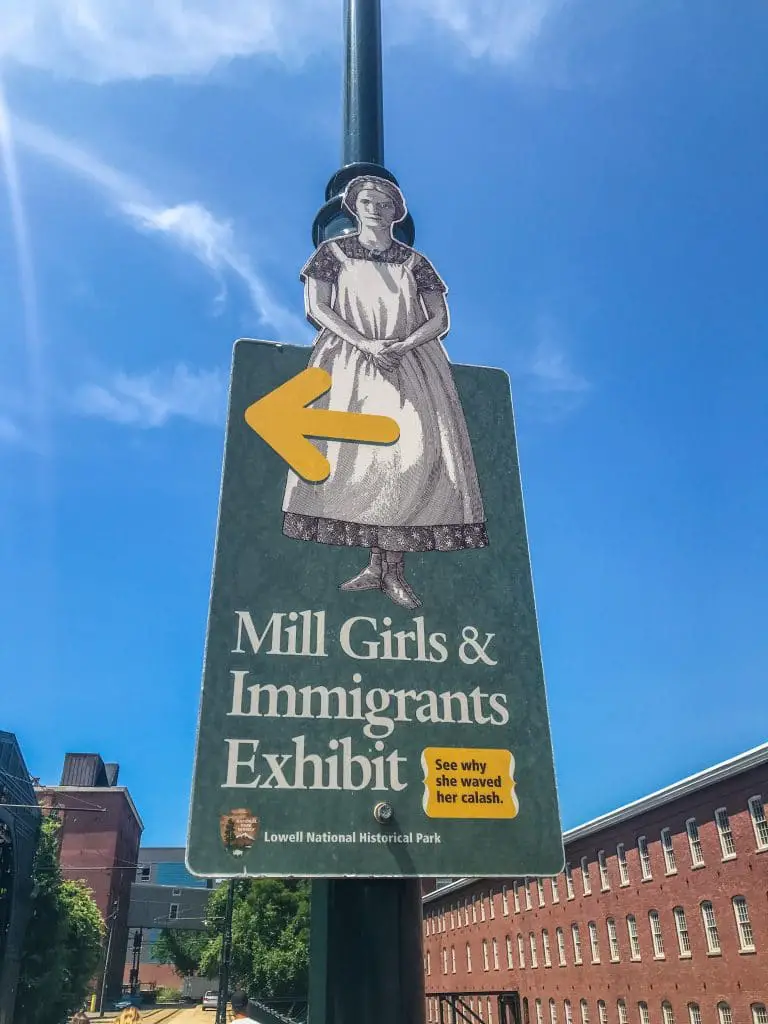
Inside of the Mogan Cultural Center of the Lowell Historic National Park, we found an exhibit on the Mill Girls and the Immigrants who made these mills successful. The exhibits are located inside of a historic boarding house from the time.
The boarding house exhibit is set up as it would have been in 1841, with a dining room set to serve up dinner, and other accommodations the mill girls would have experienced.
During this era, the unmarried mill girls would have to live in a boarding house owned and run by the mill they worked for. A Boarding House Keeper would tend to the house, cook all the meals, and help care for the girls. They also would ensure the mill girls would follow rules, and report any misconduct to their work supervisors.
4-8 women would share a bedroom, with many of them sharing double beds, living in very close quarters. Most boarding houses housed 30-40 women.
Most of these women had short stints working in the mills of what is now the Lowell National Historic Park. Average working time was just 3 years, with many girls leaving to return home, leaving for less demanding work, or for marriage.
The high turnover rate was due to poor working conditions. In the beginning of the industrial revolution, women had few opportunities for independence and income. This made the mills enticing, and these communities provided a bustling social life for these young women, most of which were between 15 and 30 years old.
Mill girls worked in the factories for 12-14 hour days 5 days a week, and half days on Saturdays. Sundays were for observing the sabbath and attending church, which was required. Additionally, strict curfews, and conduct codes were in place for these women.
As more and more women came and went from Lowell during the industrial revolution, it became apparent better wages and conditions were needed. As women petitioned for these changes, they realized they needed voting power to make real change. Because of this, Lowell ended up being a hub for workers rights and suffragettes to work their causes.
Decline and Transition to Lowell National Historic Park
By the mid1800s the population of Lowell had reached over thirty-three thousand people, and millions of yards of textiles were produced each month. During this time period, the labor that fueled the mills shifted from the Mill Girls to immigrants and even children due to cost cuts.
As the civil war dawned, war-time work shortages and complaints about poor working conditions started to affect the profitability of the Mills in Lowell MA. Profits reduced and many factories popped up further south, closer to the cotton.
By the roaring 20s, Lowell was not roaring so much. Mills had started closing right and left and the city’s economy crumbled.
Over the next few decades, Lowell remained in the same poor economic state, with some historic buildings being demolished. Still, by the 1970s Lowell had the largest collection of historic factories and mills buildings still standing.
Due to this reason, Lowell was selected to become Lowell National Park and forever display the history that so many worked so hard to create.
Guided and Self-Guided Tours of Lowell National Historic Park
Self-Guided Walking Tours of Lowell National Historic Park
Lowell National historic Park has almost five miles of walkways for self-guided tours. These walkways are along the canals and waterways of Lowell. Maps are available in the visitor’s center to guide you, but you’ll also find plaques along the paths containing information about the canals, mill buildings and the people of the era.
Inside the Mills and Beneath the Ground at Lowell National Historic Park
Our trip back in time included both a peek inside the mills and a trip underground with the Mill and Trolley Tour. Both included a trolley ride which provided a fun and free way to experience the town and learn more about the history of the mills.
We enjoyed the trolley on a beautiful, somewhat hot day in beginning of August. The wind on the ride provided a nice relief to the heat as we enjoyed the sights and learned the history.
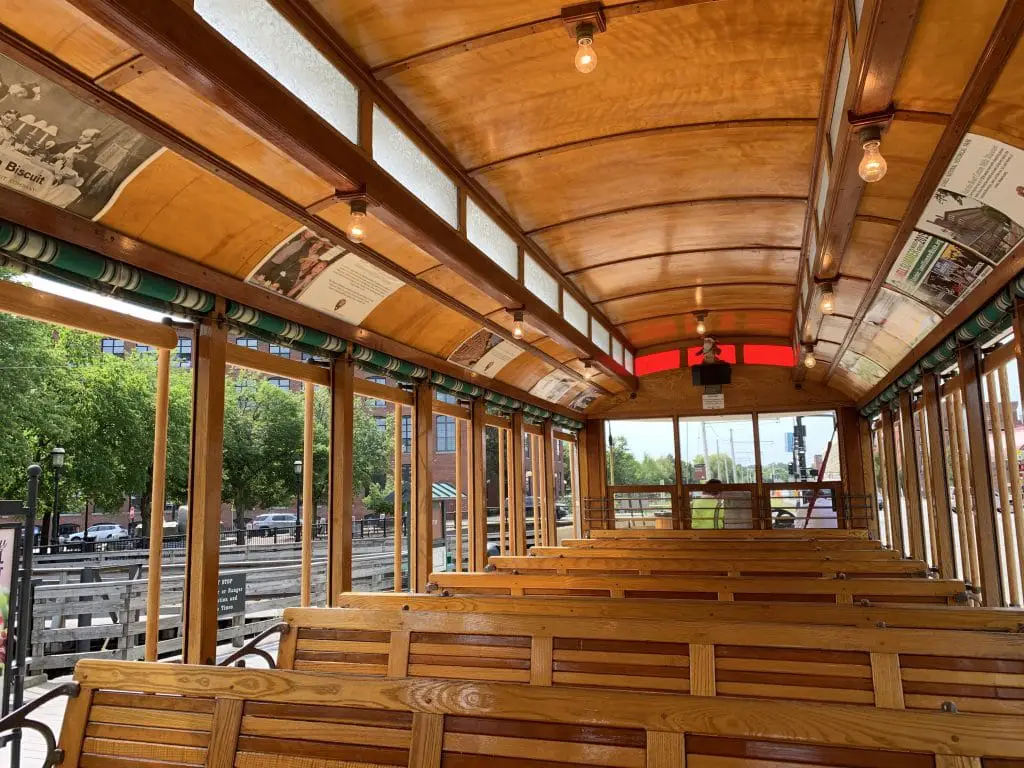
The trolley tours begin at the visitors center where you gather as a group and are given an overview by your tour guide before you depart. Our tour guide was able to answer many in depth questions that we and others had and showed us some historical photos of the places we would see.
After the group meet up, we crossed the street and boarded the trolley with our tour guide. Going down the tracks, you will follow the canals and learn about their structures and the gate buildings that help control the flow of water.
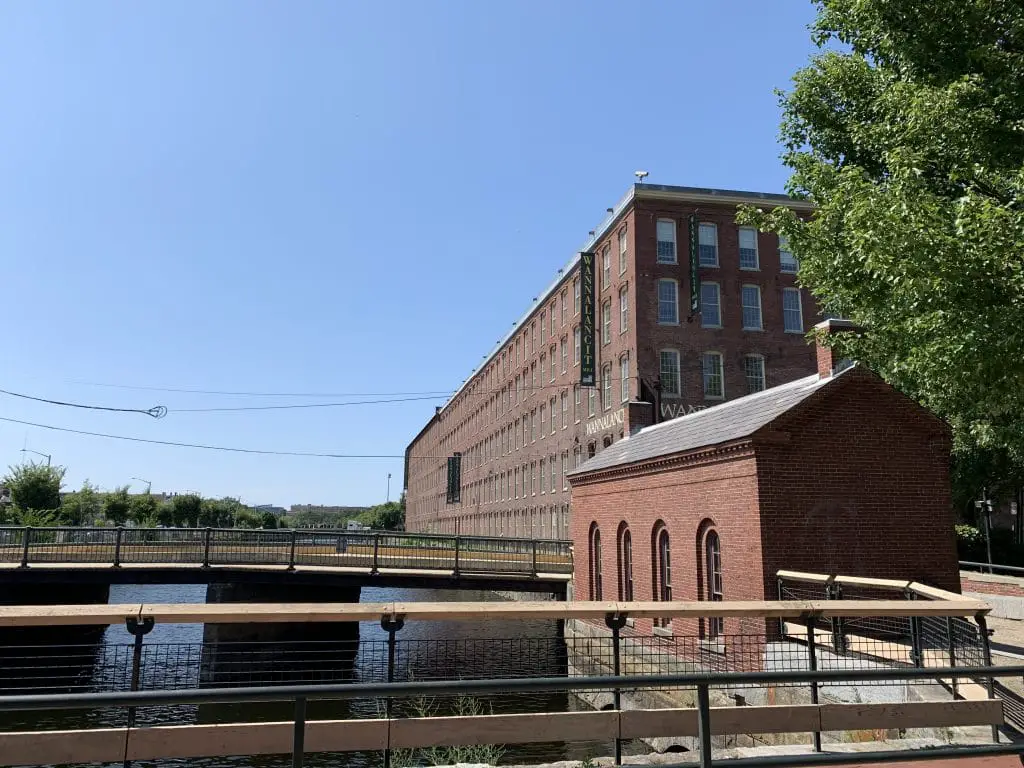
The trolley tracks end at the Wannalancit Mill of Lowell National Historic Park, formerly known as Suffolk Mills. Inside the mill your tour guide will show and explain the turbine systems that powered the mills. These massive and elaborate systems are extremely well engineered for their time period.
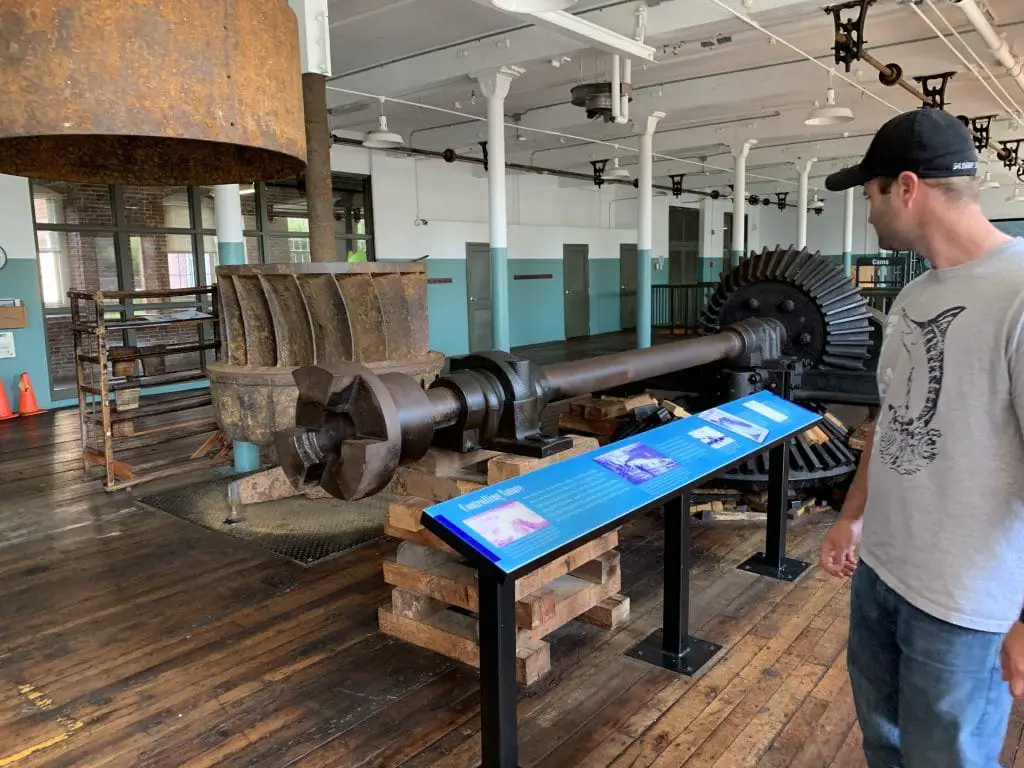
The last leg of the tour before boarding the trolley back to the visitors center takes you into the basement of the mill building. Down in the dark depths, you can see how water was diverted to each building to spin the turbines and how the used water was then diverted down a drop to provide power for the next mill in line.
In addition to the Working the Water tour, we also wanted to get into the mills themselves. A time travel trip wouldn’t be complete without physically seeing the power looms in action and experiencing the working conditions of the time.
Boot Cotton Mills Museum, the Heart of Lowell National Historic Park
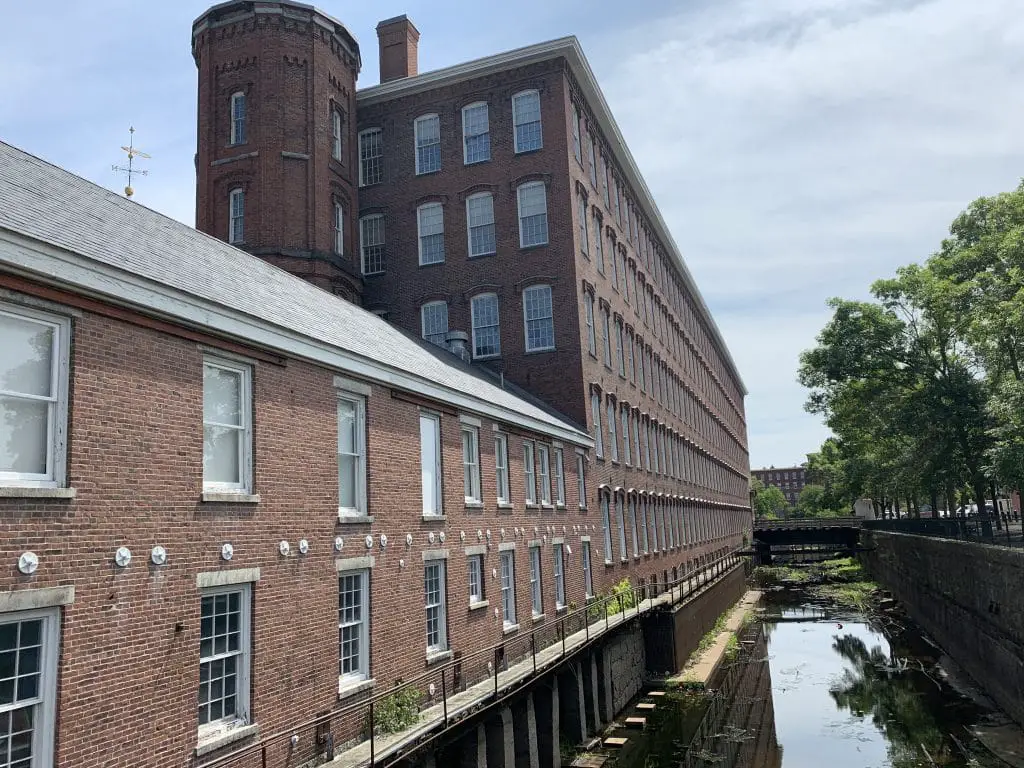
After boarding the trolley again from the visitor center, we took another leisurely ride along the canals, this time headed to the Boot Cotton Mills Museum. Here, for a small fee, you’ll be admitted to the factory floor and museum to see how the looms themselves work as well as the dangers they presented to their workers.
My favorite part was being able to see the imprints of the looms on the original wood flooring. You can see just how tight these machines were to each other and imagine trying to navigate between these moving machines wearing the large dresses that mill girls wore at the time. It wasn’t uncommon for clothing or hair to get caught in the machinery, and many girls were seriously injured.
While the Boot Cotton Mills Museum acts more as a self-guided tour, we found it a great place to immerse ourselves in the history of Lowell National Historical Park. Inside this large mill building, you will find a working mill room with looms running just as they would in the mid 1800s.
We spent a good deal of time inside this interactive museum exhibit just watching the machines work and the museum employees work them as the Mill Girls and immigrants did back in the day. It is extremely important to wear the ear plugs that are provided, even with just a few of the looms running, the noise was very loud.
Inside Lowell National Historic Park today, the machines are spaced farther apart and running different material through them, so the working conditions are not exactly the same. The workers of the original mills dealt with close quarters, dusty and debris-filled air, and loud conditions with no ear plugs. Occasionally, the shuttles of the looms would even fly off the machines and become a projectile.
Moving out of the loud room, we headed up a flight of stairs into an elaborate and hands on museum explaining all the history of mills of the time. Exhibits included: another movie (similar to the one in the visitors center,) diagrams of mill buildings, evolution of the loom, a lot of photos and machinery of the time. Many of the exhibits include interactive elements, such as learning to use a loom, and carding wool.
To return to the visitor center, you can take the trolley back, but we were in this experience for the full immersive effect, so we headed over to the Mill Girls and Immigrants Exhibit. Here, you will enter a boarding house where women who worked the mills used to reside. You’ll visit actual living quarters and see how the girls lived, ate and slept outside of work. You’ll also learn about the strict rules governing behavior and the recreation opportunities that emerged as women moved from country life and took the first baby steps toward independence.
However, if you just want to get a view of the city and the mills from the outside, the trolley can also be ridden without taking the tour and is used as a regular transportation system within Lowell National Historical Park. The trolley transports those who don’t wish to walk between the visitors center station and the Boot Cotton Mills Museum
Traveling the Canals: Boat Tours at Lowell National Historic Park
In addition to trolley and walking tours, the Lowell National Historic Park offers boat tours as well. These tours do come at an additional charge but are a fun way to learn about Lowell’s history, specifically the canals.
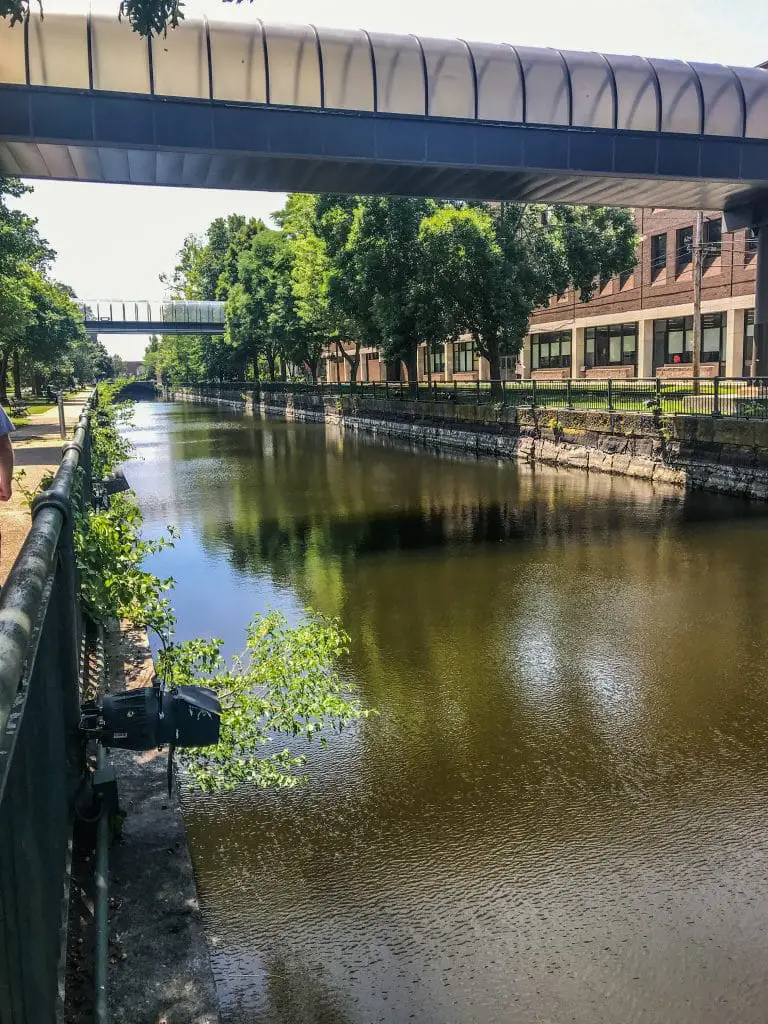
Travel along the canals built long ago and learn about the workers who built them. Boat tours also cover who worked the canals, what their jobs were, and what they did to keep the water flowing to the mills, as well as how the canals were built.
These tours also take you through the locks and gate systems to demonstrate how they worked. The boat tours are the most expansive tours and cover the most land of Lowell National Historical Park.
Engineering Innovation Tours of Lowell National Historic Park
The last tour offered in Lowell National Historical Park is the engineering Innovation Tour, made for those who ask questions like “how?” instead of “why?” This tour is made for people like my dad (an engineer who has a desire to know all) and covers all the engineering feats of Lowell MA.
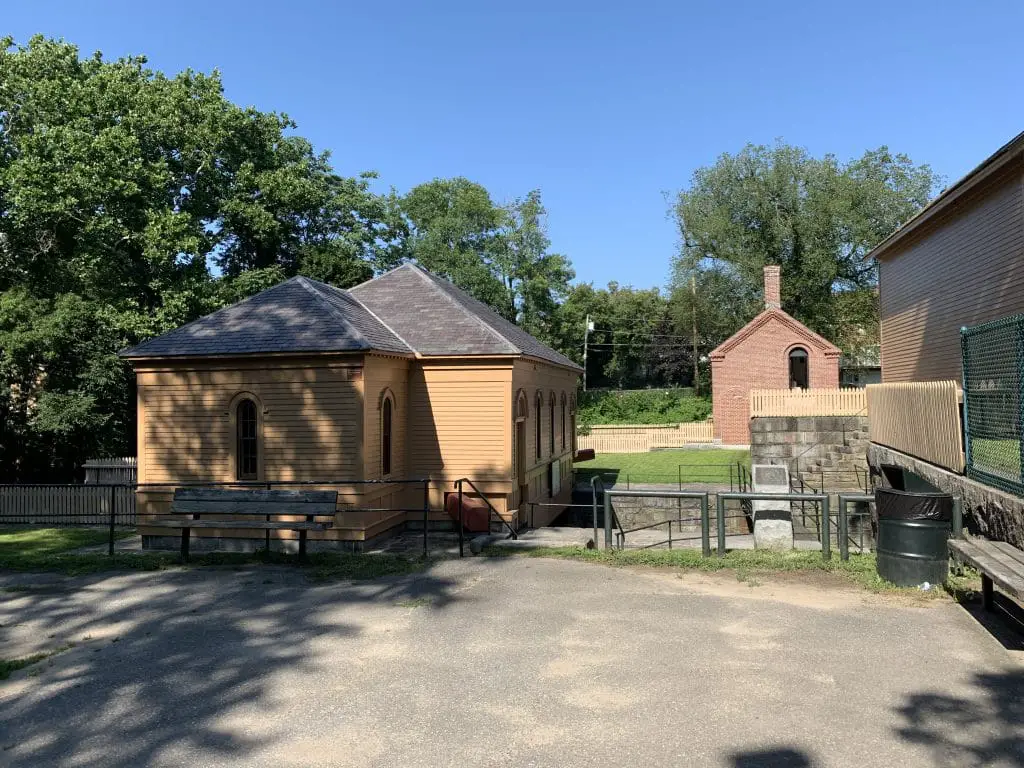
The tour takes an in-depth dive into the evolution of the canals, turbines, power systems and all the other parts that made the mills work. The tour explores what failures took place and what worked for the engineers of the time.
It is worth it to keep in mind that many of these tours are not available during the winter season due to weather restrictions.
What to know Before Visiting
- All tours besides the walking tours are usually suspended during the colder winter months.
- Walking and trolley Tours are free for all.
- Boat tours cost $8-$12 based on age. For youth (6-16) boat tours are $9, for adults boat tours are $13 and boat tours are $11 for seniors. Children under 5 have a $1 tour fee.
- For all guided tours, be sure to arrive at the visitors center at least 30 minutes prior to the scheduled departure time.
- When visiting Lowell National Historical Park, be sure to start at the visitors center to watch the film and take a map.
- Ear plugs are free inside the Boot Cotton Mills Museum- be sure to use them.
- The visitors center is located at 246 Market Street Lowell, MA 01852
- Regular park hours are 10 am- 5 pm daily.
- Find holiday and special closure dates and times here.
- During the summer, trolley and boat tours operate during all weather (except lightning,) so be prepared.
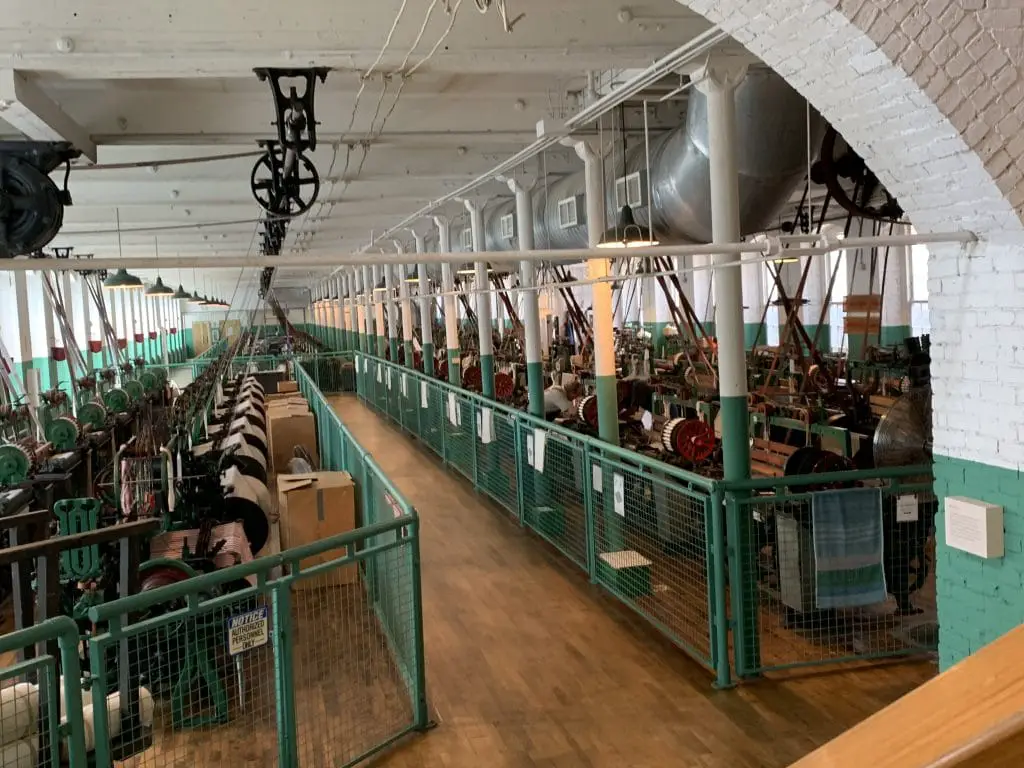
Our time travel through Lowell National Historic Park was an eye-opening experience. Stepping into the shoes of the Mill Girls provided me with a perspective that I thought I understood, but only came to really see through experience.
Early women pioneers, such as the girls who left home and countryside to take jobs within the mills, were unknowingly paving the way for subsequent generations of women. By braving the poor and often unsafe working conditions of the mill environment, they found a way to better their lives, but also cracked the door for future generations to experience independence and prosperity.
Women in America did not receive the right to vote until 1920, but it was the small, but bold and courageous steps taken by women like the mill girls that initiated the onward and upward momentum that made it possible for women to enjoy the opportunities available today.




